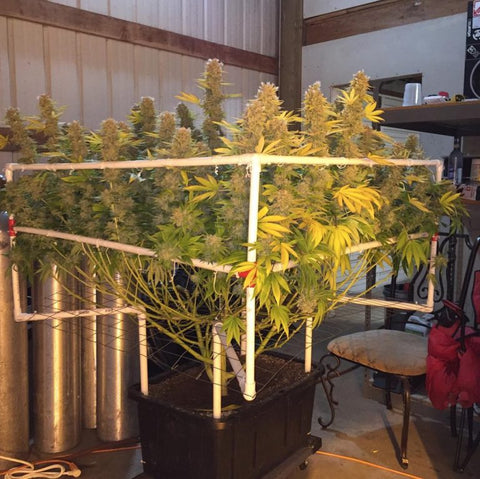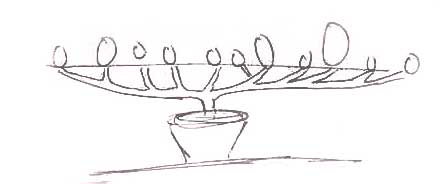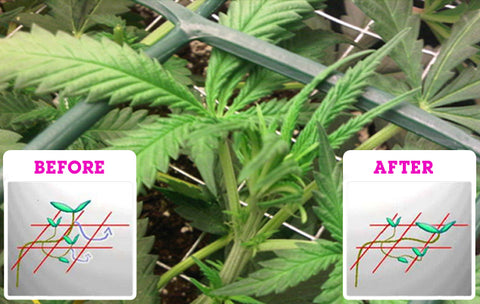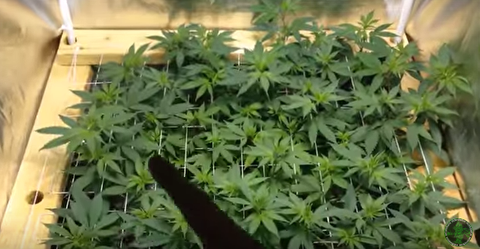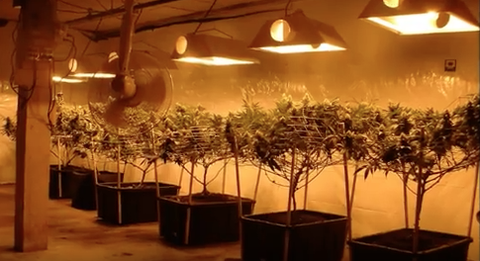ScrOG blOG™ — optimal light band intensity

Best "How to ScrOG" Guides
Sea of Green (SOG) vs Screen of Green (ScrOG)
A great deal of confusion exists regarding the difference between Sea of Green (SOG) vs Screen of Green (ScrOG) methods of growing cannabis. Before I present what I consider to be some of the better "How to ScrOG" Guides, allow me to briefly define the difference between SOG and ScrOG.
SOG - SOG is used to create "perpetual harvests". The method involves high plant counts per cu ft and short grow cycles. Clones are introduced to 12/12 flowering with little to no veg cycle. Trellis or other screen material may be used to support heavy colas but no plant training techniques are used. Many growers cannot use SOG due to local plant count limitations.

Sea of Green (SOG), multiple plants
ScrOG - The ScrOG method involves lower plant counts, typically 1 plant per 2'x2' area. Veg periods vary, with longer veg periods resulting in canopies larger than 2'x2'. Screens are used to facilitate plant training which results in short bushy plants with virtually all target bud sites in the best lighting zone. ScrOG method is touted to produce 2 to 3 times the yield of traditional growing methods.

There are a number of variations of the ScrOG method. We have scoured the internet and selected what we consider to be some of the better "How to Guides" below.
Argument for single plant ScrOG
The original Screen of Green (ScrOG) was invented and popularized by Wolf Segal of Portland, Oregon. Previously, underground growers (including Wolf) would use SOG (Sea of Green) to ensure perpetual harvests. SOG puts several plants under one screen. Wolf was arrested and jailed during operation "Green Merchant" in the 90s and gained the distinction of having the highest plant count in history. Wolf then came up with the concept of ScrOG to dramatically reduce plant counts and at the same time maintain high yields.
Growers who have embraced the concept of ScrOG have found far more benefits than just reducing plant counts.
Why do many growers prefer single plant ScrOGs?
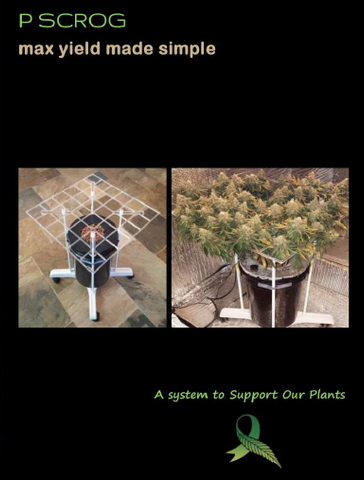
P SCROG Techniques
- Ease of providing individual plant care - When 2 or more plants are placed under a single ScrOG net, those plants are typically treated the same out of necessity. Growers have trouble getting to plants at the far reaches of the grow. All plants are treated the same despite their strain maturity level or health.
- Simple to move around if necessary - If you need to pull a plant from a grow for any reason, you need to cut the net and remove it, leaving remaining plants unsupported.
- Improved light distribution - Growers can rotate, custom adjust heights, plants grow at different rates and mature a different rates.
- Easy to remove troubled plant from grow space, lowers risk of damage to remaining crop
- Easier to water and flush
- Allows gardener to harvest plants individually at precise maturity
- Eliminates crawling under nets/wire mesh
- Wheel chair / handicap accessibility
- Irrigation equipment accessibility
- A single plant can be scrogged at an optimal time in its growth cycle. Otherwise, only the most aggressive growing plants enjoy the full benefit of Screen of Green.

P SCROG Techniques

MAXIMIZE YIELD
with
P SCROG Kits
P SCROG support 7 days a week - 512-528-6028
or
SupportOurPlants@SCROGGER.com
or
SupportOurPlants@SCROGGER.com
- Gary Memelstein
- Tags: best how to scrog guides best scrog guides cannabis plant training grow lights growing cannabis how to scrog hydroponics indoor grow lollipopping lst optimal light band intensity scrog scrog kit scrog method scrog product scrog screen scrog technique scrogging topping trellis trellis net
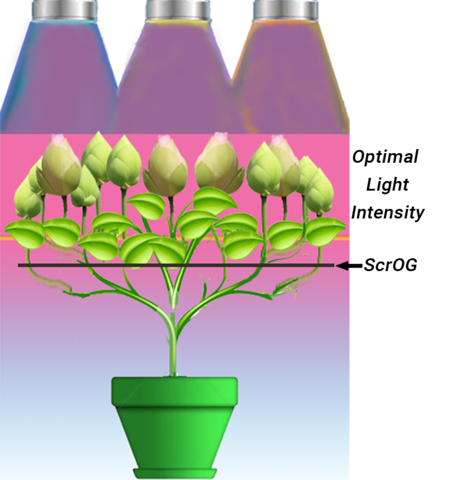
Optimizing Light
Plant training methods have been around for hundreds of years. In the 17th century, the French developed a technique called “espalier” which was used both for decorative and fruit production purposes.

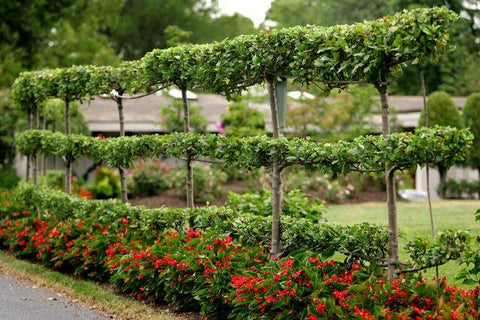
Espaliered Pear and Apple Trees (above)
” The most important advantage (of espalier) is that of being able to increase the growth of a branch by training it vertically. Later, one can decrease growth while increasing fruit production by training it horizontally.” 1
Scrogging builds on the espalier technique to grow short, bushy horizontal plants allowing for maximum bud development. The main stem of the plant is forced to multiply by Topping. Low Stress Training (LST) is accomplished by bending the branches of stems under the lower training screen resulting in more bud development per branch. Lollipopping all leaves of lower branches focuses the energy upward to bud development. A flat horizontal plane of buds, developing all in unison, can be placed in the optimal light intensity band at the same time. No buds are stunted due to upper growth shading and all plant energy is focused solely on bud development.
Scrogging builds on the espalier technique to grow short, bushy horizontal plants allowing for maximum bud development. The main stem of the plant is forced to multiply by Topping. Low Stress Training (LST) is accomplished by bending the branches of stems under the lower training screen resulting in more bud development per branch. Lollipopping all leaves of lower branches focuses the energy upward to bud development. A flat horizontal plane of buds, developing all in unison, can be placed in the optimal light intensity band at the same time. No buds are stunted due to upper growth shading and all plant energy is focused solely on bud development.
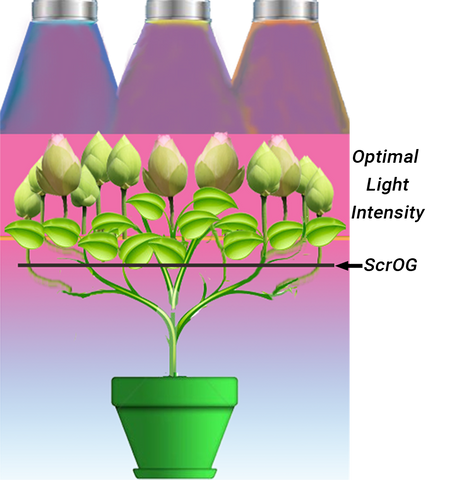
Most references to the ScrOG method espouse 2 to 3 times increase in bud yield.2
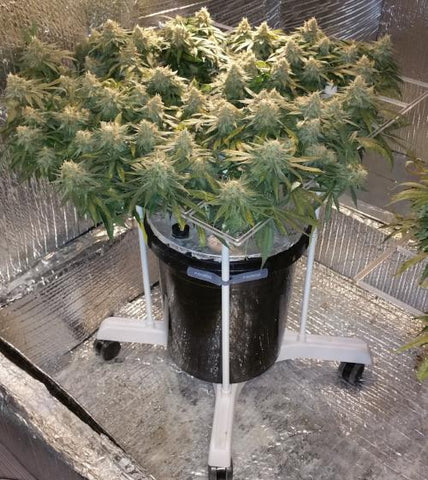
P SCROG Primary System
References
1. Wikipedia “espalier” 2. GrowWeedEasy.com


MAXIMIZE YIELD
with
P SCROG Kits
P SCROG support 7 days a week - 512-528-6028
or
SupportOurPlants@SCROGGER.com
or
SupportOurPlants@SCROGGER.com
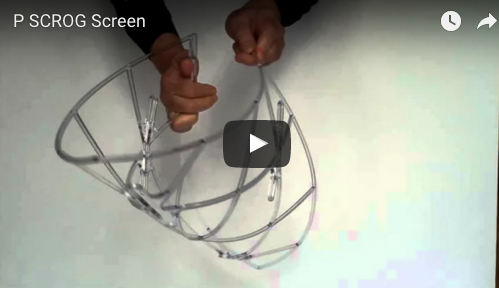
Double yield for $5
Would you pay $5 per plant each grow to double your yield, some say even triple? P SCROG along with Low Stress Training (LST) can do it for $5 a grow in part because of the superior screen material.
P SCROG screens are molded from polycarbonate resin to provide optimal growing conditions, strength and safety when using the ScrOG method to maximize yield.
Polycarbonate is a lightweight, high-performance plastic that possesses a unique balance of toughness, dimensional stability, optical clarity, high heat resistance and electrical resistance.
Indoor grow spaces by their very nature utilize a dangerous combination of water and electricity to maintain life of plants. Metal ScrOG screens are conductors of electricity and heat and should be avoided in the growing environment to reduce chance of electrical shock, fire hazard and damage to plants. In addition, metal "racking" type material (especially black) can block up to 13%* light during ScrOG training in addition to conducting heat and possibly stunting growth.
P SCROG screens are naturally transparent, with the ability to transmit nearly all available light to plants. The screens have high strength, toughness, heat resistance, electrical resistance and excellent dimensional and color stability.
The general properties can be summarized as follows:
- excellent physical properties
- excellent toughness
- very good heat resistance
-
good chemical resistance
-
electrical resistance
- transparent
- horticulture friendly
The same P SCROG screen material is used to make bullet proof glass.
The following diagram compares the impact strength of polycarbonate to other common polymers.
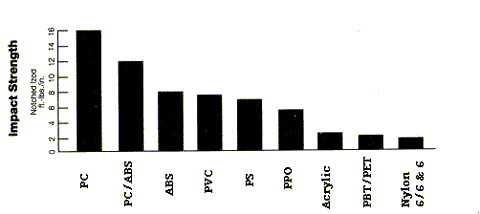
Data from Polymer Technologies & Services, LLC.
SCROGGER warranties P SCROG screens for 5 full years because of the quality and strength of the polycarbonate material. With the P SCROG 4 20 sale, that works out to about $5 a grow** over the warrantied life.
Celebrate 4 20 and save 25%, good now until April 30, 2016. Hurry, only 420 hours left!

MAXIMIZE YIELD
with
P SCROG support 7 days a week - 512-528-6028
or
SupportOurPlants@SCROGGER.com
or
SupportOurPlants@SCROGGER.com
